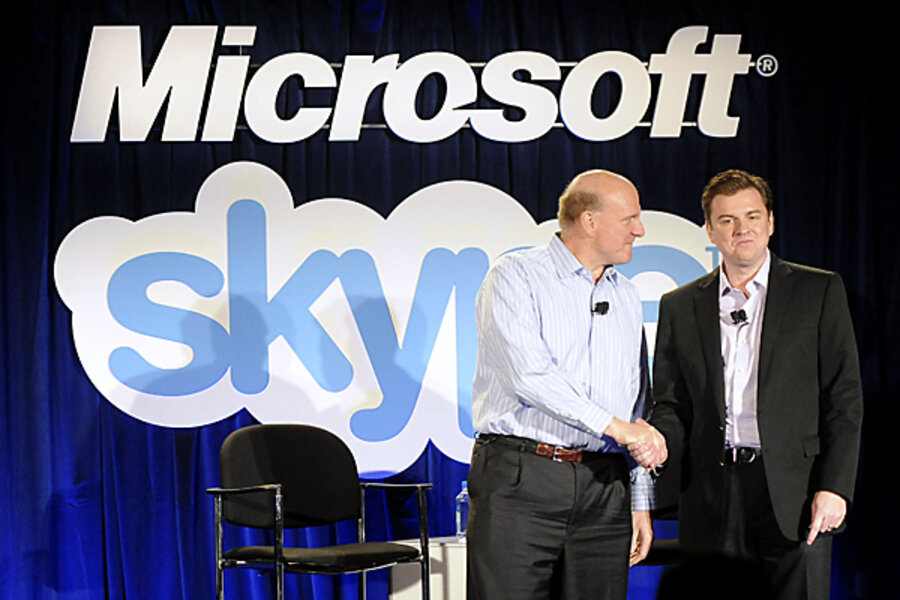Why Microsoft paid $8.5 billion for Skype, which is mostly free
Loading...
It just feels so good to make a call on Skype.
With its blue, bubbly icons and dreamy dial tones, you half expect Grandma to pick up from Mario Land. The novelty of making a face-to-face video call is slow to wear off, and the price – which is free for the vast majority users – is simply magic.
But in the business world, it's an unusual business model. Only about 9 million of Skype's 145 million users pay for use. So why did Microsoft pony up $8.5 billion for a service that's almost free – and what can Microsoft do to improve that bottom line?
Since Skype started in 2003, it has balanced its checkbook in two ways. First, it gives away core services but charges for upgrades. Currently, users can choose to upgrade to a prepaid credit plan or monthly subscription, which add features like text messaging, calls to phones (instead of just computers), and now, group video calling.
The other way Skype makes money is through business partnerships, with companies of all sizes, including big ones like Nokia and MySpace.
By giving away its services for free, all of Skype’s services become more valuable, explains Marshall Van Alstyne, an associate professor at Boston University's management school.
“If you are a user, the fact that other people who have Skype can now reach you, makes Skype more valuable,” Mr. Van Alstyne says.
Skype’s model is not a “two-sided network strategy” where one distinct group of people gets the service for free while another one pays. Instead, Skype gives away services for free so that it can charge for more later, just like a cellphone company might give away a phone and charge for adding minutes later, says Van Alstyne.
Adding advertisements would alienate some users, Van Alstyne says, but it’s conceivable that Microsoft will do so in order to make money from the ads or charge users a fee if they don’t want to see ads. Van Alstyne also suspects that Microsoft might put Skype onto phones using Windows mobile operating system or start bundling Skype into the Windows operating system.
Microsoft is likely to turn to advertising and it won't bother customers, says Jim Lakely, co-director of the Center on the Digital Economy at the Heartland Institute in Chicago. “Microsoft didn’t pay $8.5 billion for Skype with plans to not make money off of them down the line.”
Skype itself has been looking into the ad model.
“It’s challenging to get right as the way people use Skype is very personal," Josh Silverman, the company's CEO, told The Telegraph in an interview. "But we think our users expect us to do it so we can continue to support free. But it will be done in a tasteful way.”





